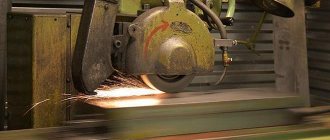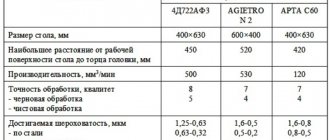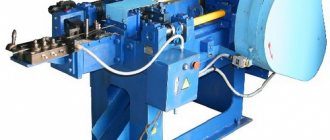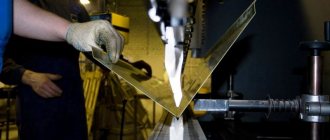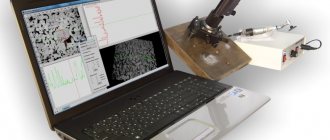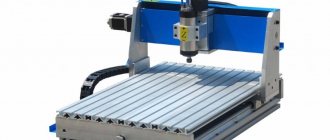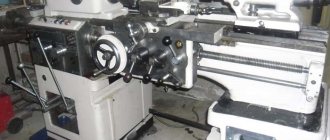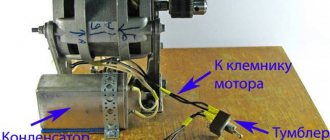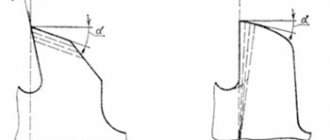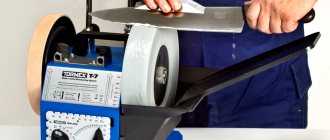Modern construction technologies require the use of high-quality lumber, which can rightfully include profiled timber. This product is distinguished by a number of advantages (strength, ease of installation and excellent thermal insulation characteristics), which guarantees the high quality of buildings constructed on its basis.
However, to make timber yourself (if it is impossible to purchase it ready-made), you will need special equipment, namely a four-sided woodworking machine.
Four-sided woodworking machines
Based on their design, four-sided machines are divided into “light series” and “heavy series”. The first ones are equipped with cutters and are used for processing molded products. The second ones are designed for processing large sections, for example, laminated veneer lumber. When choosing equipment for woodworking, you need to take into account the requirements for productivity, feed speed of lumber, permissible cross-section of workpieces, drive power, etc.
sells four-sided woodworking machines V-HOLD, RICHMAN and other brands. The accuracy and rigidity of the units comply with GOST 7315-92. The catalog presents equipment for the production of lining, skirting boards, platbands, timber, block houses, floor boards and other molded products.
Design of different components of a four-sided machine
To understand how the equipment works, it is necessary to consider the design features of the machine, which includes a large number of components, the main ones of which we will consider in more detail.
Cast iron bed
At the base of the machine there is cast iron ; it can have different alloys and inserts, but it necessarily absorbs a certain amount of vibration during operation of the equipment and, due to its large mass, almost reduces it to zero. For feeding timber, the material from which the loading table is made is also important. For more convenient work, there may be auxiliary elements on the table: pressure rollers, a ruler, and so on.
Tools
The number of spindles in a woodworking machine can be set from 4 to 8 or more.
All of them, taking into account the model, are installed in different working units with independent electric motors. The spindles are fixed in a cantilever manner. The number of spindles depends on the complexity of the profile, the thickness of the wood removed and the needs during processing of the timber. In a four-sided longitudinal milling machine there are working rollers, which are divided into: right and left, upper and lower. The main ones in the design are rollers with spindles, which are located below horizontally and on the right vertically. The exact number of planing and shaping elements provided in the equipment determines its power, productivity and class .
In the range of different manufacturers of four-sided machines, there is universal equipment with an element that can replace any of the vertical or horizontal spindles. It can process the product at an angle, that is, it acts as an inclined roller.
At the customer's request, a saw shaft can be installed on some equipment models. This device can cut a wide product to length, which allows you to create a material with the correct geometric shape and the required cross-section.
Feeder
Pulling, feeding and unloading of products in four-sided woodworking equipment is driven. All work is done using pressure and toothed rubberized rollers. This system can be controlled from a remote control, but the price for these computerized devices is higher.
Control and security system
The protective cover reduces noise during timber processing and also protects the operator from various injuries.
The sight glass can be additionally equipped with illumination. The woodworking four-sided machine is controlled from the panel. Taking into account the equipment model, several actions can be performed from the control panel: the speed of feeding the product to the tools, setting the dimensions of the processed timber, setting the position of the spindles relative to the diameter and part of the nozzle (if the equipment is fully automatic), turning it on and off.
The type of equipment depends on the presence of a hydraulic spindle and joyter in the kit and the number of working tools. These devices sharpen knives directly during processing of the product.
Features of Four Side Planing Machines:
- rigid solid-cast bed and wear-resistant spindle;
- high precision of all operations thanks to CNC;
- easy replacement of cutters, convenient control panel (for quick transition between workpieces of different sections);
- maintainability.
A four-sided woodworking machine is multifunctional equipment for processing workpieces on four sides at once. Increases woodworking productivity and precision of part profiling. Designed for cutting boards into lamellas, profiling timber and manufacturing molded products (plinths, corners, trim, lining, parquet) in one pass. Suitable for the production of furniture and building materials.
Design features and purpose
Before you start making a four-sided machine at home, you will need to familiarize yourself with the design features of a typical planing unit.
The classic design of a 4-sided woodworking machine can be represented as a combination of the following main parts:
- mechanism for receiving and feeding workpieces;
- a typesetting section consisting of a spindle with a cutting tool (mill or knife saw);
- engine (gasoline or electric) with drive;
- organs for setting cutting parameters, adjusting, feeding and controlling the entire process.
Four-sided models are known, which have several spindles with cutting tools arranged in one row.
According to the features of their application, all known designs of machines for profiling boards and making timber are divided into two large groups, within each of which many intermediate options are possible.
Firstly, this is a portable (mobile) machine for profiling timber, which can be assembled with your own hands and is widely used at home or in workshops with small production volumes. Its main advantage is mobility (the ability to move to the place of work), as well as good adaptation to any processing conditions. The disadvantages of such a 4-sided unit include the impossibility of expanding the range of products and low automation.
Secondly, this is a universal stationary woodworking machine that provides significant volumes of lumber. Stationary machines are usually equipped with CNC systems and a whole set of interchangeable cutting tools.
The four-sided stationary machine is designed to perform a range of woodworking operations, including routing (in this way it is similar to a milling tool), planing and jointing, as well as thicknessing and profiling. With their help, it is possible to process a wide variety of types of wood raw materials and obtain finished products of various names and sizes (timber, lamellas, slats and lining).
Feeder
The feeding device of a modern four-sided machine with a planing function can be represented as follows.
The supply of wood blanks (future timber) is carried out by means of four drive rollers, and a set of upper and side clamps is responsible for its correct orientation in the direction of movement. The rollers located on top perform their function due to their own weight or under the influence of spring amplifiers.
Note! Adjustment of the size of the removed chips and profiling of the workpieces is carried out by moving the front part of the table vertically.
Wood lumber is fed into the device in a continuous mode, in which there is no gap between successive pieces one after another.
The latter is explained by the fact that even a slight gap in the feed will require new filling into the rollers, which significantly reduces the productivity of the equipment and increases labor costs.
It is possible to increase the productivity of the entire four-sided woodworking machine as a whole by partially automating the receiving unit, carried out by combining the functions of positioning the board and its feeding. It is usually set at a speed of about 8-22 meters per minute, but in some modern equipment this parameter is increased almost five times.
The number of revolutions of the cutting tool per minute averages 5-6 thousand units (in the latest models of the latest design it has been increased to 9 thousand).
Processing area and unit
A typical processing unit of a four-sided woodworking machine contains upper and lower horizontally mounted shafts and a pair of spindles mounted vertically. Each of them has a cutting head equipped with a straight or shaped knife. The size of the workpiece is set by horizontal movement of the spindle (changing the position of the cutting edge). When cutting boards, their thickness is set by the vertical movement of the upper shaft.
The processing unit kit may include an additional (fifth) cutting or planing shaft, which ensures the arrangement of a profile along the lower edge of the workpiece. To eliminate the effect of waves formed on the surface of the wood from the circulating heads, special knives are provided in this area. They provide an imitation of smoothing. The knives are made in the form of a block of blades fixed on the base of the table, attached at an angle of 45 degrees to the feed plane and cutting off about 0.02-0.2 millimeters of wood from the surface being processed. Thanks to this arrangement of the unit, the wave crests remaining from the operation of the jointer are completely cut off.
Control system
The operation of four-sided stationary woodworking equipment is usually controlled from a remote control panel, but such a system is not suitable for a homemade device.
Note! In the case of self-manufacturing of the machine, the main thing is to provide mechanisms for setting the size of the workpieces and the speed of their feeding into the cutting zone.
In addition, it is necessary to provide the ability to set the position of the set of spindles relative to the part, as well as vary the type and diameter of the cutting tool. One should not lose sight of the mandatory presence on the woodworking machine of functional elements responsible for turning it off and on.
Pros and cons of equipment
One of the most positive qualities of four-sided machines is their high productivity. To achieve optimal results, the design must be equipped with a software numerical control unit. Then the influence of the human factor will be minimal.
The conditions for the correct preparation of the program must be met, and the workpiece being processed must be accurately measured. In its optimal configuration, the equipment is designed for processing cylindrical workpieces and rectangular beams. Jointing and milling of sheet materials can be performed on both sides. Features of the operation of machines of this type are the following factors:
- the speed of movement along the workpiece bed is calculated in advance to ensure maximum processing accuracy;
- each jointing and milling unit is regulated separately, their functioning with each other must be consistent;
- waste is promptly removed from the treatment area.
The main disadvantages of woodworking four-sided machines are the high cost and complexity of setup. However, in production line conditions these indicators are not significant.
Design and scope
Relatively recently, designs that combine several operations have appeared in the wood processing industry. Processing of wooden products occurs on four sides at once. This equipment is most often used for milling and jointing.
The woodworking machine consists of:
- spindle section;
- part feed unit;
- equipment parameter control systems.
On one side there can be several processing heads, which reduces the cost of manufactured products and reduces the time for performing a certain operation.
The four-sided machine is designed to perform the following operations:
- Milling. Instead of planing shafts, disk cutters are installed on the working heads of the equipment, which makes it possible to do longitudinal milling. To carry out processing with finger cutters, it is necessary to periodically stop the parts, however, this is not provided for by the design;
- Planing and jointing. This can be done using shafts with blades of a certain configuration installed on them. The design of the machine makes it possible to simultaneously perform finishing and roughing;
- Reaming and profiling.
Most often, such models are used to create lumber with a flat surface or profile. All the work can be done in one pass.
Using four-sided machines you can make products such as:
- parquet or floorboard;
- profiled or laminated timber;
- lining;
- baseboard;
- imitation timber;
- window and molding elements.
